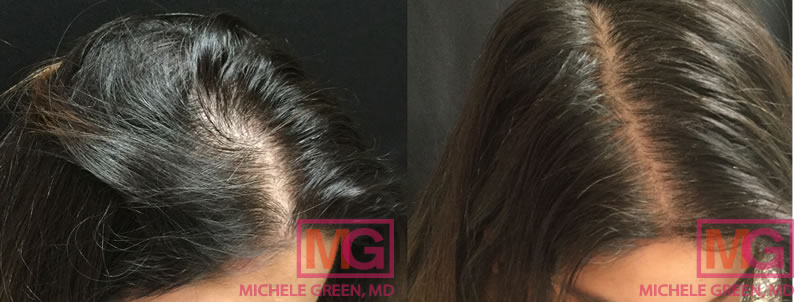How Long Does PRP Hair Treatment Last?
PRP (platelet-rich plasma) is a common hair restoration treatment. Platelets are a components of red blood cells that contain a wide range of growth factors and proteins that can help accelerate tissue repair as well as wound healing. PRP therapy is not only used just for hair loss but also for other areas of the body, such as: tendons, ligaments, muscles, and joints. This helps accelerate the healing process in musculoskeletal problems.
Alopecia (hair loss) can be devastating and can cause emotional distress for many, however, Ricki Lake who has been struggling with hair loss for many years says, “life doesn’t end when you lose your hair.” In light of Ricki Lake’s announcement, Dr. Green has recently discussed the issues surrounding female hair loss on Channel 9’s Chasing News.
Who Makes a Good PRP Candidate?
As some types of hair loss result from damaged hair follicles, platelet-rich plasma therapy can help with hair regrowth by reversing the process that occurs in androgenetic alopecia (male pattern baldness or female pattern hair loss). Patients that have experienced hair loss, thinning hair, or suffer from alopecia areata are good candidates that can benefit from PRP. During a PRP hair treatment, your own blood will be drawn and placed into a centrifuge – this will spin the blood sample at a fast rate causing the separation of the platelet-rich plasma from the other blood components. Your dermatologist will then inject the plasma in areas of the scalp that are affected by androgenic alopecia.
PRP Aftercare
After completion of the PRP injections, you may feel some soreness and/or discomfort at the injection sites – these are common side effects. There is minimal downtime, it’s recommended to not exercise the day of treatment; however you can resume the following day. Avoid alcohol and smoking (or any smoky areas) for at least the next 3 days – as it can impact the healing process. Do not wash your hair the day of treatment, you may shampoo your hair the following day. In some cases, women can use Oral Spironolactone or birth control pills to increase hair growth too, but in all cases, discuss options and your overall situation with Dr. Green first to see what is best for your case.

View additional PRP before and after photos
How Many PRP Hair Restoration Treatments Will I Need?
A patient may typically need around 4 or 5 PRP treatments that are given a month apart in order to see new hair grow, however, results of PRP do vary from patient to patient. It all depends on the amount of hair loss or hair thinning you’ve experienced, along with ones hormone levels and genetic makeup.
How Long Do PRP Treatments Last
You’ll have ongoing treatments every 3-4 months or even yearly depending upon how you respond to the treatments. Your dermatologist may also recommended taking Minoxidil or Finasteride in conjunction with PRP to get faster and fuller results. In addition to PRP, there is also the option for a hair transplant, which is a surgical procedure that involves the removal of hair follicles from different areas of the body in order to treat the area affected by hair loss. Hair transplant works best for those patients that have baldness, whereas PRP works best to promote hair growth in areas where the hair follicles are not damaged completely.
If you’re frustrated with issues relating to hair loss, there’s finally a nonsurgical solution that can help. Contact us online today or call our NYC based office at 212-535-3088 to learn more about whether using PRP may be right for you.
 212-535-3088
212-535-3088